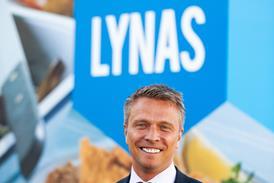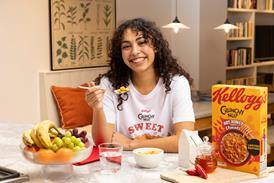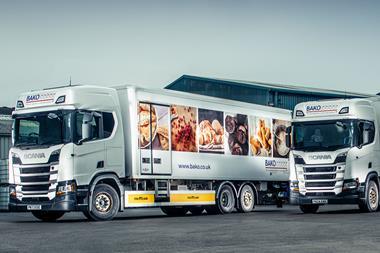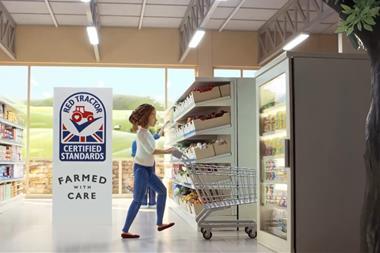Raising an infant is a wallet-emptying experience, with companies in the infant care sector constantly dreaming up new ways to part parents from their cash.
And the pressure on suppliers to do so is great, because birth rates are stable, which means value sales are not going to be driven simply by shifting greater volumes.
Around 700,000 healthy babies are born in the UK every year, according to NHS figures - but just as many leave the infant care category in the same period.
The market was worth £917m in the year to 5 November 2006, according to TNS Worldpanel figures, down 0.3% on 2005.
There were big winners within the category - baby finger food and healthcare, for
example - but staples such as nappies and baby milk suffered a slump.
So, with the market flat, and significant value growth through volumes not an option, what are companies doing to drive sales? The answer is to premiumise.
Nappies - the largest single category within infant care - is a good example of how suppliers are looking for ways to inject some value into the market.
If you thought there wasn't much left to do to improve the humble disposable nappy, you'd be wrong.
Between them, market leaders Pampers and Huggies have been responsible for
five new launches last year alone - with
innovation at the heart of their strategies for injecting value.
"With no major improvement in birth rates there is a shift towards premiumisation, so value can be raised," says Huggies brand manager Phil Holford.
In 2006, brand owner Kimberly-Clark launched two new premium products for Huggies, which is worth £73m at retail, up 0.9% year-on-year and with 18% of the
nappies market [ACNielsen, 52 w/e 7 October 2006]. It also relaunched existing SKUs.
Not to be outdone, Procter & Gamble - fierce rival and owner of category number one Pampers - fired off new launches. Pampers, which is down 5% year-on-year but still has 61% of the market, is worth £250m.
"NPD is traditionally the main driver of category growth in nappies," says Guillaume Tardy, Pampers' brand manager. "It is a category with limited opportunities in terms of
expandable consumption from a volume perspective, since babies can only wear one nappy at a time."
The drive to premiumise is high on the agenda in food, too, where a shift towards more natural, less processed, products is revolutionising the category. Babyfood has always been about convenience, but now mothers are less willing to compromise on quality for the sake of saving time.
Relative newcomers are tapping into this demand and giving market leaders Heinz, Hipp and Cow & Gate something to think about. Launches have challenged convention by going beyond the baby aisle and into the chilled ready meals and frozen aisles.
Babyfood bucked the static general market trend, TNS figures show, to record a sales uplift of 4.1% to £108.8m in the year to 5
November 2006. This was helped by the trend towards premiumisation from the likes of Plum Baby, a range of ambient organic "superfood" fruit and vegetable purée products.
Susie Willis, founder of Plum Baby, which has former PepsiCo president and newly appointed CEO of Birds Eye Igloo Group Martin Glenn as a non-executive director, says ACNielsen data shows her products now hold first, second, third, fourth, seventh and eighth position in the top ten SKUs in wet babyfood by value. Impressive, considering the range was only launched a year ago and does not yet have full-scale distribution.
"We've gone from nought to 60 in a very short time," says Willis. "Our performance is much better than our distribution warrants. We've come out of nowhere to sit alongside Heinz and Cow & Gate."
Organic products such as Plum Baby are playing an increasingly important role in the baby aisle. IRI figures show organic wet foods were worth £51m in the year to the end of June 2006, ahead of non-organic at £47m, according to Organix, which makes a range of organic babyfoods.
But there's disagreement within the category about whether shoppers are actually getting anything genuinely different from organic. The EU Weaning Directive outlines strict rules about the manufacture of products for infants aged under 36 months. Under this regulation, levels of pesticide residues have to be so low they are virtually the same as those for organically produced foods. For some this means there isn't a clear advantage to the consumer.
"In this market, there's not a lot of difference between the two and we think consumers are getting wise to that," says Babylicious founder and MD Sally Preston. "We are experiencing no demand to go organic, because people understand our food is wholesome, natural and like home-made."
But Lizzie Vann, Organix founder and MD, says there's more to it than how ingredients are farmed. "Because we're organic, our products are certified by an independent body, which is telling our customers that our food is safe all the way through the manufacturing process."
For some companies it's not about whether or not organic food is better - it's a question of practicalities. Little Dish uses non-
organic ingredients largely because of cost and availability issues. MD Hillary Graves insists the company's products deliver soundly in terms of wholesomeness.
Halal babyfood producer Mumtaz, targeted at Muslim mothers, wants to go organic, but is having trouble sourcing organic halal meat, although it is working to resolve this.
But others are not convinced it is always in a baby's best interests to eat organic. Heinz makes organic and non-organic baby food. Marketing manager for infant feeding Nicola Savage makes the point that under organic regulations, baby food cannot be fortified with essential nutrients such as iron, a mineral important for babies.
She adds: "Mothers have a choice between organic and non-organic, and that's important. But in terms of nutrition and safety there isn't much difference between them."n
















No comments yet